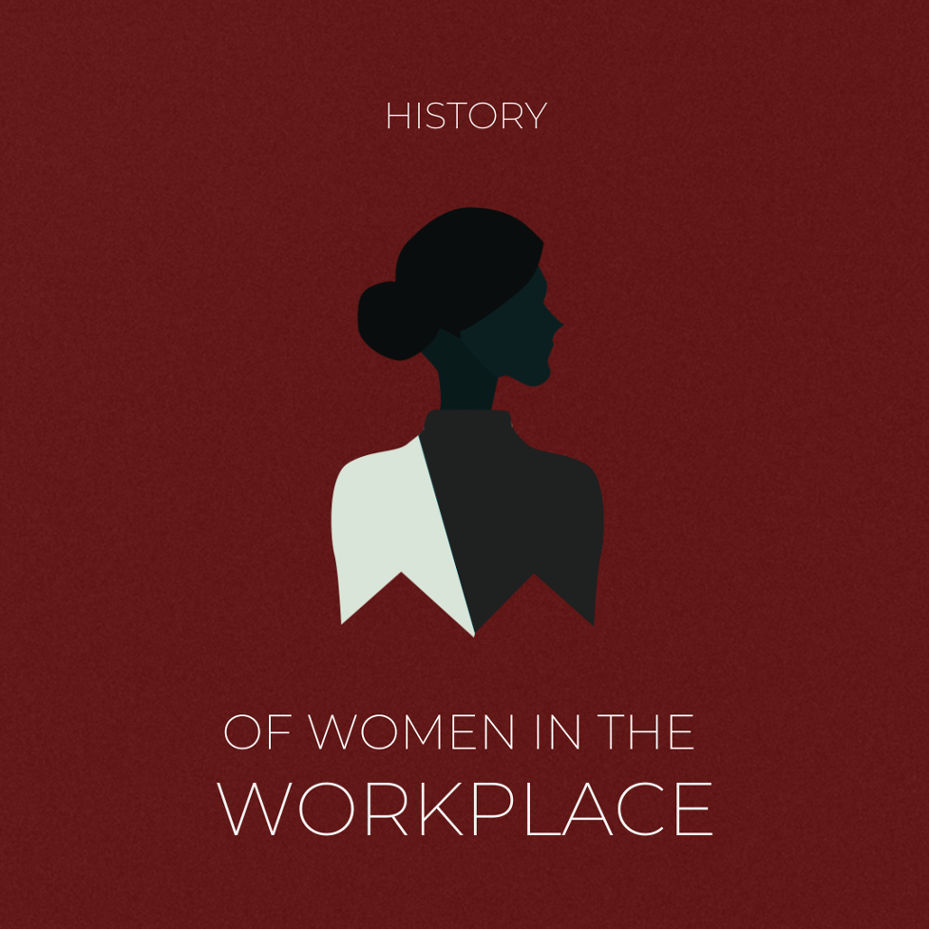CATEGORIES
#Inclusion and Impact #Women Empowerment #Work CultureOverview:
- Women have been working throughout the history of work, informally or otherwise.
- Women’s contributions to society via work has historically been underplayed by historians and society alike.
- Women experience barriers to enter the workforce that are often overlooked or dismissed.
Working Women Have Been Historically Censored
History was written by people who undervalued and dismissed women. This makes it very difficult to find records of women at all, let alone of their lifestyles or accomplishments. Even so, one can glean from what has been recorded to infer when and how women participated in the workplace.
Throughout the history of women in the workplace, women have engaged in an uphill battle for equality. From the earliest civilizations to the modern era, women have played vital roles in various industries, contributing to economic growth, social progress, and cultural innovation. However, their journey has been fraught with challenges, including systemic discrimination, unequal pay, and limited access to opportunities. Despite these obstacles, women have continuously broken barriers, shattered stereotypes, and carved out spaces for themselves in the professional world.

Back to the Beginning: When We Lived in Caves
The history of women in the workplace can be traced all the way back to the roots of human civilization. Historians have found evidence to disprove the myth that there was a clear work divide in consonance with modern-day gender roles, with women being gatherers and men hunters. Back when people lived in caves, ‘work’ meant to put in time and effort to accomplish something in return for food or resources to get food. Where survival was a necessity, every person did the most they could, and a gender-based division of labor would have been extremely inefficient.
Before Patriarchy Took Over
Contrary to popular belief, patriarchy is not “natural”. In fact, matriarchy seemed to have been the order of societies all around the world till only a couple of millennia ago. Studies show that women in matriarchal societies were financially independent and pursued occupations of their choice. No work was out of bounds, and no man was more important than a woman.
The Lowest Low (Colonization-Induced Patriarchy)
Colonization of the global south saw a shift in societal structure and power dynamics (for the worse). Women were reduced to chattel, domesticated like any other farm animal. Contributions of women then became restricted to caregiving, agricultural labor, and domestic work – most, if not all, unpaid. Because women’s consent was deemed irrelevant, slavery and sex trafficking also saw an increase in this time- other forms of oppression and exploitation without compensation.

World Wars: During and After
When the World Wars commenced, women who were till then restricted to their homes were left with no choice but to seek employment to support themselves and their children. They entered the workforce and essentially took over all sorts of jobs that were previously exclusive to men out of sheer sexism. Even after the wars ended, women employment remained on the rise: soldiers were dead or injured, the burden of providing fell entirely on a significant number of women. But despite having to juggle “work” work and household work and child-related work, women were not paid even at par with what men were
Industrial Revolution and Labor Movements
Women were increasingly employed in factories, textile mills, and other industries. These industries range from education, healthcare, to government services. Even so, it was for no one’s benefit more than the employers’. Women faced the brunt of harsh working conditions, low wages, and limited (if any) opportunities for promotions. This era also saw an upsurge in labor movements with unprecedented female turnout because women were working and needed to get things done.
History of Women in The Workplace: Globalization, and Now
The history of women in the workplace has led to present circumstances in a glaring display of what is called the snowballing effect. With the onset of globalization and the resultant exponential growth in job opportunities, women’s employment saw a parallel increase, although the statistics may vary by country. While more women were in the non-home “workforce” than ever before, the gender-wage gap persists even today. The impact of the wage gap is perhaps more detrimental now, with increased costs of living, inflation, overcrowded job markets and depleting resources (and global warming).

When Did The History of Women in The Workplace Really Begin?
The premise of the question “When did women start to work?” is misplaced to begin with. After all, ‘workplace’ can be any place where one carries out ‘work’, which is itself a very vast term to begin with. Similarly misplaced is the question “When did women enter the workforce?”, since ‘workforce’ is a mere headcount of people who work. It stands true, then, that women have historically always been at the workplace as part of the workforce. Even when their time and efforts were forcefully restricted to household and family-oriented work, women were working.
Womens’ contributions were merely swept under the rug as “minimum-effort” work under the guise of patronizing (and misplaced) concern (rather, underestimation). By that logic (or, the lack thereof), household work was suited only for women who, surely, would never last a day doing “men’s” tedious work.
Even when women started having to seek employment to support themselves and/or their families, the vastly male dominated industries were far from welcoming and supportive. On top of their usual workload, women also have to face additional stressors that most men perhaps have never spared a single thought towards:
- Workplace stressors like sexual harassment, not being taken seriously, and being overworked and underpaid;
- In-commute stressors including more sexual harassment;
- Family-related stressors such as caring for children and other family members, domestic violence, etc.
Conclusion:
People tend to forget that we don’t know all of history. Many take the limited history without a grain of salt, and then proceed to treat it as holy grail. As such, they have attempted to rationalize misogyny and sexism by sometimes vaguely citing history. As a result of this and various other factors, women have struggled to gain recognition for their contribution at the workplace. Right from the historiographers’ active redaction of women, society has tried to undermine the central role that women play across industries, including in employment. The history of women in the workplace has much to teach. It would be wise to learn from it so as to not facilitate the vicious cycle of exploitation and oppression that women have been stuck in.
FAQs:
Why Does the Gender Wage Gap Still Exist?
Technically, women have worked in all industries and occupations the same as men. The only difference is perhaps that after a certain point in history, women were denied access to education. This impacted their pay if they sought employment later. Even today, a factor of the gender wage gap is the underlying assumption that women lack the knowledge or qualifications for a job.
How Do Working Women Contribute to the Modern Labor Market?
It has been a relatively recent phenomena that women have been constrained as a result of patriarchy. Today, in the context of the rise of feminism, women are striving to reclaim financial autonomy through employment. As a result, there has been a steep upward trend in the number of women seeking employment. This, in turn, has led to a revolution in the labor market in terms of the availability of human capital.
How is the History of Women’s Work Relevant to Women Empowerment?
Women, in a universal historical experience, have been worked to the bone. This has almost always been without their consent, or via coercion of some sort. Studying the history of women in the workplace allows us to recognize societal shifts in attitudes towards women. It also allows us to compare it to present times to gauge if we progressed towards achieving absolute women empowerment.


